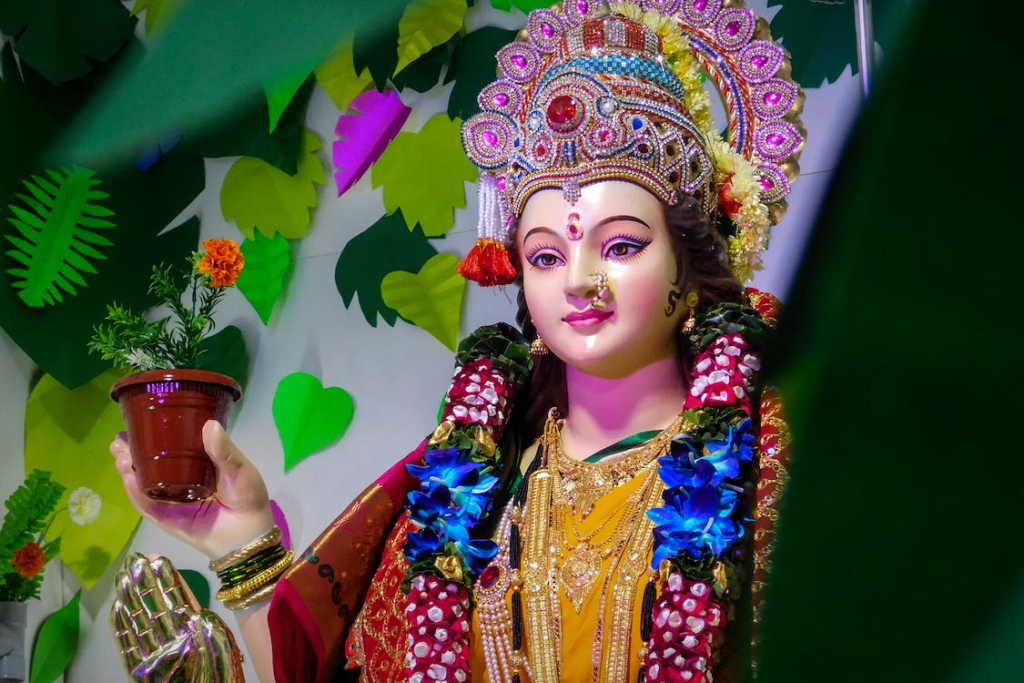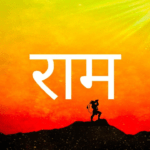Introduction
Navratri, the festival of nine nights dedicated to the worship of Maa Durga, is a time when Hindus around the world revere the divine feminine power, Shakti. In the heart of this celebration lies the mystical concept of Shaktipeeths, sacred sites that are believed to be imbued with the immense power of the goddess. In this blog, we will delve into the world of Shaktipeeths, exploring their origins, significance, and their captivating stories that resonate with the devout. There are a total of 51 Shaktipeeths in the world, each with its unique legend, and in this article, we will take you on a journey to understand these sacred sites and their importance.
The Legend of Shaktipeeths
The legend of Shaktipeeths is intertwined with the life of Goddess Sati, an incarnation of Shakti, the divine feminine energy. Sati was the daughter of King Daksha and was married to Lord Shiva, the destroyer in the Holy Trinity of Hinduism. Daksha, however, did not approve of his daughter’s choice of spouse, particularly because Lord Shiva’s way of life and appearance were in stark contrast to the grandeur of the celestial court.
One day, King Daksha decided to hold a grand yagna, or fire sacrifice, and invited all the deities except his son-in-law, Lord Shiva. Sati, who was deeply devoted to her husband, was hurt and angered by this exclusion. Disregarding her father’s wishes, she attended the yagna, where she was met with ridicule and insults from Daksha. Unable to bear the humiliation, Sati invoked her divine energy and immolated herself in the fire of the yagna.
Upon learning of Sati’s tragic end, Lord Shiva was overcome with grief and anger. He picked up her lifeless body and began the Tandava, the dance of destruction, which threatened to unravel the universe. To prevent this catastrophe, Lord Vishnu intervened and used his Sudarshana Chakra to dismember Sati’s body. Her body parts fell at various locations across the Indian subcontinent and beyond, and these became the sacred sites known as Shaktipeeths.
The Significance of Shaktipeeths
Shaktipeeths hold immense significance in Hindu mythology and religious beliefs. They are revered as powerful centers of divine energy and are visited by countless pilgrims seeking blessings, healing, and a connection with the divine. Here are some key aspects of their significance:
- Worship of the Divine Feminine: Shaktipeeths are dedicated to the worship of the goddess in her various forms. They symbolize the supreme power of the feminine, celebrating her as the source of creation, preservation, and destruction.
- Healing and Blessings: Many devotees visit Shaktipeeths seeking blessings for various aspects of life, including health, family, and prosperity. It is believed that the divine energy present at these sites can grant these blessings.
- Spiritual Pilgrimage: Visiting Shaktipeeths is considered a spiritually enriching experience. Pilgrims undertake long journeys to connect with the divine and strengthen their faith.
- Reconnecting with Sati: Shaktipeeths are seen as the places where Sati’s body parts fell, and thus, they serve as a symbol of her sacrifice and devotion to Lord Shiva. Devotees pay their respects to Sati and seek her intercession with the divine.
The Global Network of Shaktipeeths
There are a total of 51 Shaktipeeths scattered across the Indian subcontinent and beyond. These sites hold unique stories and significance, making each of them a distinct place of devotion.
| Serial Number | Shaktipeeth Name | Address |
|---|---|---|
| 1 | Kalmadhav | Amarkantak, Madhya Pradesh, India |
| 2 | Vindhyavasini | Vindhyachal, Uttar Pradesh, India |
| 3 | Purnagiri | Tanakpur, Uttarakhand, India |
| 4 | Mangala Gauri | Gaya, Bihar, India |
| 5 | Manas | Kamrup, Assam, India |
| 6 | Kamakhya | Guwahati, Assam, India |
| 7 | Kamgiri | Kaitha, Jharkhand, India |
| 8 | Kamakshi | Kanchipuram, Tamil Nadu, India |
| 9 | Prayaga | Allahabad, Uttar Pradesh, India |
| 10 | Chibka (Chandrasekhar) | Aansiv, Punjab, Pakistan |
| 11 | Kanyakumari | Kanyakumari, Tamil Nadu, India |
| 12 | Dakhinakali | Dakshineswar, Kolkata, West Bengal, India |
| 13 | Sankari | Trincomalee, Sri Lanka |
| 14 | Dwaraka | Dwaraka, Gujarat, India |
| 15 | Lankeshwari | Lanka, Varanasi, Uttar Pradesh, India |
| 16 | Vijaya | Gaya, Bihar, India |
| 17 | Devikapuram | Devikapuram, Tamil Nadu, India |
| 18 | Shuchi | Bhagalpur, Bihar, India |
| 19 | Nalhati | Birbhum, West Bengal, India |
| 20 | Nanda | Chandika Sthan, Bihar, India |
| 21 | Ekaveerika | Mahur, Maharashtra, India |
| 22 | Narayani | Nuapada, Odisha, India |
| 23 | Sarvamangala | Bhagalpur, Bihar, India |
| 24 | Bahula | Ketugram, West Bengal, India |
| 25 | Marichi | Rambha, Odisha, India |
| 26 | Jayadurga | Jaipur, Rajasthan, India |
| 27 | Girija | Deulah, Cuttack, Odisha, India |
| 28 | Prabhas | Somnath, Gujarat, India |
| 29 | Sugandha | Jalandhar, Punjab, Pakistan |
| 30 | Chhinamastika | Prithibhikram, Nepal |
| 31 | Manikyamba | Draksharamam, Andhra Pradesh, India |
| 32 | Vishalakshi | Varanasi, Uttar Pradesh, India |
| 33 | Varahi | Puri, Odisha, India |
| 34 | Kireet | Kireetshilla, Chattogram, Bangladesh |
| 35 | Saraswati | Haridwar, Uttarakhand, India |
| 36 | Bhraamari | Trincomalee, Sri Lanka |
| 37 | Chakratirtha | Prayaga, Allahabad, Uttar Pradesh, India |
| 38 | Jwala Ji | Kangra, Himachal Pradesh, India |
| 39 | Dakshayani | Amarnath, Anantnag, Jammu and Kashmir, India |
| 40 | Vimala | Puri, Odisha, India |
| 41 | Shrinkhala | Prayaga, Allahabad, Uttar Pradesh, India |
| 42 | Sureshwari | Sirkazhi, Tamil Nadu, India |
| 43 | Sharda | Tulmulla, Jammu and Kashmir, India |
| 44 | Mahakali | Ujjain, Madhya Pradesh, India |
| 45 | Ramgiri | Jaipur, Rajasthan, India |
| 46 | Chhinnamasta | Rajrappa, Jharkhand, India |
| 47 | Sugandh | Shikarpur, Gournadi, Shatkhira, Bangladesh |
| 48 | Kumari | Kathmandu, Nepal |
| 49 | Dakshina Kalika | Kankalitala, Birbhum, West Bengal, India |
| 50 | Trisroti | Varanasi, Uttar Pradesh, India |
| 51 | Durga | Barpak, Gorkha, Nepal |
These Shaktipeeths hold a special place in Hindu tradition and are revered by countless devotees seeking the blessings of the divine goddess.
Navratri and Shaktipeeths
During Navratri, the festival dedicated to Maa Durga, the Shaktipeeths take on even greater significance. Devotees believe that the goddess’s power is particularly potent during these nine nights, making it an ideal opportunity to seek her blessings and grace.
As Navratri approaches, it’s a time to reflect on the divine power that permeates these sacred sites and celebrate the goddess’s presence in our lives. Whether it’s the Kamakhya Temple in Assam, the Hinglaj Mata Temple in Balochistan, or the Jwalamukhi Temple in Himachal Pradesh, each Shaktipeeth offers a unique and spiritually enriching experience.
Conclusion
Shaktipeeths are not just physical places of worship; they are sacred sites that connect devotees with the divine feminine power, Shakti. Their stories and significance transcend geographical boundaries, uniting people in their devotion to Maa Durga and the concept of Shakti. As Navratri approaches, it’s a time to reflect on the divine power that permeates these sacred sites and celebrate the goddess’s presence in our lives. Whether you are a devout pilgrim or someone seeking spiritual inspiration, Shaktipeeths offer a profound connection with the divine, reminding us of the eternal power of Shakti.


